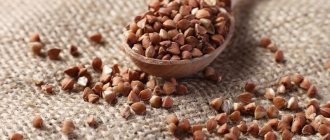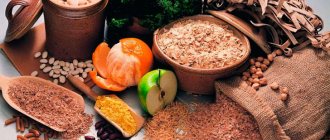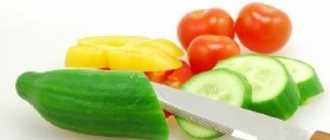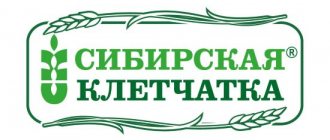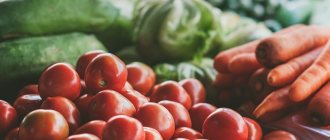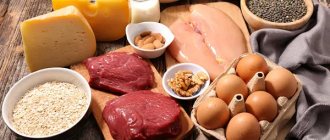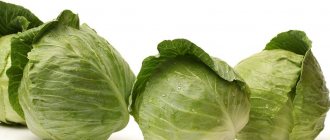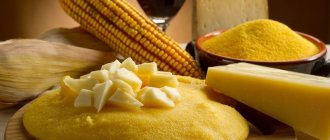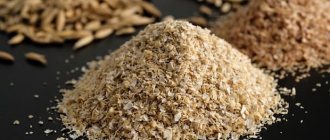What is fiber?
Fiber is a type of carbohydrate, but, unlike other substances in the group, it cannot be broken down into digestible glucose molecules.
Thus, the fiber passes through the entire digestive tract practically unchanged. However, fiber does a lot of work along the way. This substance is of great importance for proper digestion and weight correction, regulation of sugar and cholesterol levels in the blood. There is also an opinion that fiber is one of the factors that prevents the development of cancer. Some talk about it as a substance that prolongs the youth of the body.
Content:
- What is fiber?
- Daily norms
- Soluble fiber vs. insoluble fiber
- Benefits for humans
- Fiber and...
- Fiber in supplement form
- Diet rich in fiber
- Fiber-rich menu options
- When to cut back on fiber
- Excessive fiber consumption: benefits and harms
- How to take fiber correctly
In my articles, I often write about the importance of fiber in the diet. Fiber is a complex carbohydrate that is not digested by humans. A kind of ballast substance, which at the same time benefits the body and helps stimulate weight loss. When burning fat, the benefits of fiber cannot be underestimated, so let's take a closer look at what it is and what to do with it.
Types of Fiber You may have heard that fiber can be either stomach soluble or insoluble. So, this is an outdated classification. Forget about it, because this knowledge will not give you anything but confusion. The US Department of Agriculture has introduced a new classification of fibers - these are dietary and functional fibers.
Food – non-digestible carbohydrates and lignin, which are the main part of plant foods with the lowest possible sugar content. They are found in vegetables, fruits, and cereals.
Functional – isolated fibers without digestible carbohydrates. These are dietary fiber supplements.
If you read food labels, you've probably noticed that many manufacturers have begun to list fiber content on their products, but unfortunately, this doesn't give us any information about the calorie content of the fiber itself. As a result, many questions arise, such as, for example, is it worth counting fibers in KBZHU at all?
Calorie content of dietary fiber There is an opinion that fiber does not have calories, but serves only to add volume to the diet. I have met more than once people who do not count fresh vegetables, for example. On the one hand, the calorie content of fiber is negligible, according to the FDA, approximately 1.5 kcal/g of fiber, but on the other hand, bacteria in the intestinal tract react to some types of fiber, in addition to fiber, even bran and leafy vegetables have BJU, so counting, of course, you need, but not fiber separately, but the KBJU of the product as a whole. author Ekaterina Golovina That is, tomatoes, carrots, cabbage count, and apples and pears, which are also rich in dietary fiber, even more so.
KBZHU food additives “fiber” can not be considered, since it is still not absorbed, but it is still worth monitoring the consumption.
How much fiber do you need? The universal recommendation is 35-50 g of fiber (as part of products + additives), based on 10-15 g of fiber for every 1000 kcal. But most of us don’t eat even 10 g, especially in winter. Therefore, in winter and for weight loss, it is advisable to include nutritional supplements in the diet, and also pay attention to unprocessed whole grains and products made from them, legumes, leafy vegetables, apples, prunes, raspberries.
The amount of fiber needs to be increased with high-protein diets, as well as with age. The amount of fiber in your diet should be increased gradually.
There are also contraindications. Fiber supplements are contraindicated for gastritis and peptic ulcers in the acute period.
To get the maximum benefit from consuming fiber in supplement form, take it with water. It absorbs water in the stomach and swells.
It is also better to refrain from cooking vegetables and fruits, since in the process they lose a significant part of the fiber. Chopping food is also not good.
Properties of fiber As for the properties of the supplement, by swelling in the stomach, it allows you to maintain a feeling of fullness for a long time, and when it is on your plate, it visually increases the serving size.
Both dietary and functional fiber
- Reduces cholesterol levels;
- Reduces the time of movement of products in the colon;
- Reduces glycemic response to carbohydrates;
- Increases the absorption of essential fatty acids, vitamins, and minerals.
And finally, a table showing the content of dietary fiber in various products.
Related posts:
Daily norms
Researchers say the average woman consumes about 13 grams of fiber daily, and men about 17 grams. Meanwhile, nutritionists have found that fiber is so important for humans that it should be present in the diet every day. At the same time, men under 50 years old should consume approximately 38 grams of fiber per day, older ones - about 30 grams. Women under 50 years of age are recommended to consume about 25 g of the substance daily, and 21 g per day is enough for women over 50. It is not difficult to provide yourself with these portions if your daily diet contains whole fruits and vegetables, nuts and seeds.
The required amount of fiber for children is determined taking into account age categories: children under 3 years old should receive 19 g of the substance per day, 4-8 years old - about 25 g per day, girls 9-18 years old - 26 g each, boys 9-13 years old – 31 g each, boys 14-18 years old – 38 g each.
Nutritionists say that the ratio of insoluble to soluble fiber should be 75% to 25%. But since many products (rolled oats, bran, flax seeds and others) contain two types of dietary fiber, you should not specifically calculate the proportions.
Calories Fiber. Chemical composition and nutritional value.
Nutritional value and chemical composition of "Fiber".
The table shows the nutritional content (calories, proteins, fats, carbohydrates, vitamins and minerals) per 100 grams of edible portion.
| Nutrient | Quantity | Norm** | % of the norm in 100 g | % of the norm in 100 kcal | 100% normal |
| Calorie content | 425 kcal | 1684 kcal | 25.2% | 5.9% | 396 g |
| Squirrels | 50.7 g | 76 g | 66.7% | 15.7% | 150 g |
| Fats | 19.8 g | 56 g | 35.4% | 8.3% | 283 g |
| Carbohydrates | 11 g | 219 g | 5% | 1.2% | 1991 |
| Alimentary fiber | 5.6 g | 20 g | 28% | 6.6% | 357 g |
| Water | 9 g | 2273 g | 0.4% | 0.1% | 25256 g |
| Ash | 5.1 g | ~ | |||
| Vitamins | |||||
| Vitamin A, RE | 3 mcg | 900 mcg | 0.3% | 0.1% | 30000 g |
| beta carotene | 0.04 mg | 5 mg | 0.8% | 0.2% | 12500 g |
| Vitamin B1, thiamine | 1.27 mg | 1.5 mg | 84.7% | 19.9% | 118 g |
| Vitamin B2, riboflavin | 0.36 mg | 1.8 mg | 20% | 4.7% | 500 g |
| Vitamin B4, choline | 25.6 mg | 500 mg | 5.1% | 1.2% | 1953 |
| Vitamin B5, pantothenic | 0.68 mg | 5 mg | 13.6% | 3.2% | 735 g |
| Vitamin B6, pyridoxine | 0.146 mg | 2 mg | 7.3% | 1.7% | 1370 g |
| Vitamin B9, folates | 96 mcg | 400 mcg | 24% | 5.6% | 417 g |
| Vitamin E, alpha tocopherol, TE | 2.3 mg | 15 mg | 15.3% | 3.6% | 652 g |
| Vitamin H, biotin | 1.9 mcg | 50 mcg | 3.8% | 0.9% | 2632 g |
| Vitamin K, phylloquinone | 0.3 mcg | 120 mcg | 0.3% | 0.1% | 40000 g |
| Vitamin RR, NE | 11.1 mg | 20 mg | 55.5% | 13.1% | 180 g |
| Niacin | 4 mg | ~ | |||
| Macronutrients | |||||
| Potassium, K | 497 mg | 2500 mg | 19.9% | 4.7% | 503 g |
| Calcium, Ca | 1474 mg | 1000 mg | 147.4% | 34.7% | 68 g |
| Silicon, Si | 199 mg | 30 mg | 663.3% | 156.1% | 15 g |
| Magnesium, Mg | 540 mg | 400 mg | 135% | 31.8% | 74 g |
| Sodium, Na | 75 mg | 1300 mg | 5.8% | 1.4% | 1733 g |
| Sera, S | 169.6 mg | 1000 mg | 17% | 4% | 590 g |
| Phosphorus, P | 720 mg | 800 mg | 90% | 21.2% | 111 g |
| Chlorine, Cl | 21 mg | 2300 mg | 0.9% | 0.2% | 10952 g |
| Microelements | |||||
| Aluminium, Al | 50 mcg | ~ | |||
| Bor, B | 37 mcg | ~ | |||
| Vanadium, V | 54.7 mcg | ~ | |||
| Iron, Fe | 16 mg | 18 mg | 88.9% | 20.9% | 113 g |
| Yod, I | 7.1 mcg | 150 mcg | 4.7% | 1.1% | 2113 g |
| Cobalt, Co | 2 mcg | 10 mcg | 20% | 4.7% | 500 g |
| Lithium, Li | 77 mcg | ~ | |||
| Manganese, Mn | 1.427 mg | 2 mg | 71.4% | 16.8% | 140 g |
| Copper, Cu | 1457 mcg | 1000 mcg | 145.7% | 34.3% | 69 g |
| Molybdenum, Mo | 15 mcg | 70 mcg | 21.4% | 5% | 467 g |
| Nickel, Ni | 190 mcg | ~ | |||
| Rubidium, Rb | 11.8 mcg | ~ | |||
| Selenium, Se | 34.4 mcg | 55 mcg | 62.5% | 14.7% | 160 g |
| Strontium, Sr | 17 mcg | ~ | |||
| Titanium, Ti | 5.9 mcg | ~ | |||
| Fluorine, F | 3 mcg | 4000 mcg | 0.1% | 133333 g | |
| Chromium, Cr | 5.8 mcg | 50 mcg | 11.6% | 2.7% | 862 g |
| Zinc, Zn | 10.23 mg | 12 mg | 85.3% | 20.1% | 117 g |
| Zirconium, Zr | 2.8 mcg | ~ | |||
| Digestible carbohydrates | |||||
| Starch and dextrins | 10.2 g | ~ | |||
| Mono- and disaccharides (sugars) | 2 g | max 100 g | |||
| Essential amino acids | 5.37 g | ~ | |||
| Arginine* | 1.9 g | ~ | |||
| Valin | 0.886 g | ~ | |||
| Histidine* | 0.478 g | ~ | |||
| Isoleucine | 0.783 g | ~ | |||
| Leucine | 1.338 g | ~ | |||
| Lysine | 0.554 g | ~ | |||
| Methionine | 0.559 g | ~ | |||
| Methionine + Cysteine | 0.87 g | ~ | |||
| Threonine | 0.768 g | ~ | |||
| Tryptophan | 0.297 g | ~ | |||
| Phenylalanine | 0.885 g | ~ | |||
| Phenylalanine+Tyrosine | 1.6 g | ~ | |||
| Nonessential amino acids | 12.883 g | ~ | |||
| Alanin | 0.781 g | ~ | |||
| Aspartic acid | 1.666 g | ~ | |||
| Glycine | 1.386 g | ~ | |||
| Glutamic acid | 3.946 g | ~ | |||
| Proline | 0.75 g | ~ | |||
| Serin | 0.945 g | ~ | |||
| Tyrosine | 0.716 g | ~ | |||
| Cysteine | 0.315 g | ~ | |||
| Sterols (sterols) | |||||
| beta sitosterol | 210 mg | ~ | |||
| Saturated fatty acids | |||||
| Saturated fatty acids | 1 g | max 18.7 g | |||
| 16:0 Palmitinaya | 4.2 g | ~ | |||
| 18:0 Stearic | 2.2 g | ~ | |||
| 20:0 Arakhinovaya | 0.1 g | ~ | |||
| Monounsaturated fatty acids | 19.5 g | min 16.8 g | 116.1% | 27.3% | |
| 16:1 Palmitoleic | 0.1 g | ~ | |||
| 18:1 Oleic (omega-9) | 19.4 g | ~ | |||
| Polyunsaturated fatty acids | 19.6 g | from 11.2 to 20.6 g | 100% | 23.5% | |
| 18:2 Linolevaya | 19.6 g | ~ | |||
| Omega-6 fatty acids | 19.6 g | from 4.7 to 16.8 g | 116.7% | 27.5% |
The energy value of fiber is 425 kcal.
Primary Source: Created in the application by the user. Read more.
** This table shows the average levels of vitamins and minerals for an adult. If you want to know the norms taking into account your gender, age and other factors, then use the “My Healthy Diet” application.
Soluble fiber vs. insoluble fiber
Dietary fiber consists of non-starch polysaccharides such as cellulose, dextrins, inulin, lignin, chitin, pectins, beta-glucans, waxes and oligosaccharides.
There are two main types of fiber: soluble and insoluble.
Soluble fiber
Soluble fiber, as the name implies, dissolves in an aqueous environment, and when passing through the digestive tract, it can be fermented, after which it acquires a jelly-like consistency. It slows down the digestion process, resulting in a feeling of fullness that lasts longer. Thanks to this ability, it helps control appetite, and therefore weight.
Benefits of Soluble Fiber:
- reduces the level of “bad” cholesterol;
- regulates blood sugar concentration, which is important for diabetics and people with metabolic syndrome.
Products containing soluble fiber: fruit pulp, beans, peas, carrots, oats, flaxseeds. All these products dissolve in the body to a gel-like texture.
Insoluble fiber
Benefits of Insoluble Fiber:
- promotes proper intestinal motility and prevents constipation;
- accelerates the removal of toxins from the body through the colon;
- maintains optimal acidity levels in the intestines.
Insoluble fiber retains its shape throughout all stages of digestion. Accelerates the passage of food through the gastrointestinal tract and its elimination, which prevents constipation. Examples of insoluble fiber are hemicellulose, cellulose and lignin.
Foods rich in insoluble fiber: vegetables and fruits (peels), beans, greens, nuts, seeds.
Many foods contain both soluble and insoluble fiber. But their proportions vary. Meanwhile, substances from both categories have a beneficial effect on the functioning of the body.
A little theory
We get fiber from plant products - these are the fibers of stems, seeds, supporting structures of leaves, and so on. These are parts of plants that the body cannot digest at all or partially digests. There has long been a well-known classification of fiber divided into two subtypes: soluble and insoluble. The recommended daily dose is 25 grams of fiber.
Fibers that dissolve in water form gels in the digestive tract and are called soluble fibers. Fibers that do not dissolve in water and pass through the body unchanged are therefore called insoluble. Plant foods typically contain a mixture of both types. Insoluble fiber is found primarily in wheat bran, nuts, and many vegetables. Their texture is thick and rough. Soluble fiber is found in oats, beans, barley and some fruits.
According to many studies, water-soluble fiber can lower cholesterol levels, slow down digestion, stabilize blood sugar levels, and soften stools. Insoluble fiber helps move solid waste through the intestines and remove them quickly from the body to prevent constipation and some gastrointestinal diseases. But here it is worth noting one very important fact. It's not enough to eat a lot of fiber. It is important to maintain water balance. With a lack of water, you can observe the opposite effect - problems with the gastrointestinal tract.
Many of these statements have not yet received unequivocal scientific support. But the benefits of fiber are undeniable and confirmed by many studies. The review, based on numerous scientific papers and published in the journal Nutrition, clearly states the following. People who add fiber to their diet lose more weight than those who don't. In addition, they slow down the absorption of nutrients in the intestines. And fiber-containing foods help you feel full by absorbing water.
Over time, the classification described above has changed. Because existing definitions of fiber did not cover all the functions of fiber. Within each subspecies there are many different fibers. Therefore, the USDA got rid of these classifications. There are now two subcategories: dietary fiber and functional fiber.
Alimentary fiber.
Indigestible carbohydrates and lignin, a mixture of polysaccharides that are integral components of the plant cell wall or intercellular structure. These fibers pass through the small intestine to the large intestine, where they can be partially or fully fermented by intestinal bacteria.
Functional fibers.
Indigestible carbohydrates that have beneficial physiological effects on humans. For example, inulin is known as a prebiotic that promotes the growth of healthy bacteria in the gut.
Benefits for humans
Regular consumption of fiber is very important for the health of the body. For example, it is known that consumption of soluble fiber protects against the development of cardiac diseases, in particular by reducing cholesterol concentrations. An insoluble substance reduces the risk of constipation, colitis, colon cancer, and hemorrhoids. Researchers say consuming fiber-rich foods reduces the risk of diverticulitis (small protrusions in the colon). You can also get rid of irritable bowel syndrome with the help of dietary fiber. People with diabetes who consume a lot of this substance tend to need less insulin. It has a beneficial effect on the functioning of the kidneys and gallbladder, in particular, it prevents the formation of stones in the organs.
Dietary fiber: where is it found?
So, what is dietary fiber or fiber? These are substances that are not digested in the human body, but ensure the growth and stable functioning of the internal intestinal microflora.
This is nature’s best invention for everyone who cares about their health, wants to maintain stable functioning of the gastrointestinal tract and have a beautiful figure. This is why you should add fiber-rich foods to your daily diet.
Where is fiber found? We invite you to look at the table with fiber-rich foods:
As you can see, the most fiber is found in:
- legumes
- cereals
- nuts
The fiber content in vegetables, berries and fruits is significantly lower - mainly due to the fact that most of their volume is water. But on the other hand, you can eat much more fruits and vegetables than cereals - due to the same water, they are lower in calories.
Fiber and...
…cholesterol
Dietary fiber helps lower cholesterol levels. The process of digesting food requires bile acids, which are partly composed of sterol. To improve digestion, the liver pulls cholesterol from the blood to create bile acids, thereby reducing the concentration of so-called “bad” cholesterol.
…heart health
A link has also been found between fiber intake and the risk of heart attack. In people whose diet is based on foods rich in fiber, the risk of heart disease is reduced by 40%. And just increasing your daily fiber intake by 7 grams is enough to reduce your risk of heart attack by 7%.
…blood sugar
Research has shown a connection between fiber and blood glucose levels. American scientists have noticed that increased consumption of fiber can reduce glucose levels. In addition, the risk of developing diabetes is reduced in people who consume enough fiber daily. Soluble fiber helps slow the breakdown of carbohydrates and the absorption of glucose, which helps control blood sugar levels.
…cancer
Research conducted in 2011 showed a potential relationship between the amount of fiber consumed and the risk of cancer. Then a group of scientists conducted a control experiment on animals, and this time the researchers found that such a connection still exists, but only if the correct microflora is present in the intestines. In this case, the fiber reacts with bacteria in the lower part of the large intestine. Fermentation produces a reactant called butyrate. It is this substance that causes self-destruction of cancer cells.
But this is not the only type of cancer that is affected by fiber. Recently, scientists from Nebraska announced the results of another study. In their opinion, fiber, oddly enough, can also prevent lung cancer. The study found that 68 percent of those who consumed 18 grams or more of fiber per day had excellent lung health. Also, lovers of foods containing fiber turned out to be the best in another test - for lung capacity. Scientists do not yet know how to explain this relationship.
…longevity
According to many scientists, the secret of longevity lies in dietary fiber. And American epidemiologists believe that high-fiber foods can reduce mortality rates. And they add: wheat fiber and whole grain products are especially beneficial for humans. A 14-year follow-up showed that people whose diets included these foods had a 19 percent lower risk of death. By the way, some studies suggest that in ancient times the diet of our ancestors included at least 60 g of dietary fiber per day.
…allergy
In addition to all this, it is believed that fiber also plays a role in preventing food allergies. This theory again stems from the relationship between fiber and gut bacteria.
Scientists suggest that people with impaired intestinal microflora are prone to food allergies, in particular those caused by peanuts, crustaceans and shellfish. And dietary fiber activates the proliferation of the clostridia bacterium, on which the proper functioning of the organ actually depends.
List of foods with healthy fiber for people with food allergies: apples, pears, melon, carrots, potatoes, rutabaga, broccoli, green beans, pumpkin, zucchini. Their plant fiber is presented in high concentration and at the same time they are hypoallergenic products.
…asthma
A similar explanation applies to the effectiveness of fiber in treating asthma. One reason autoimmune diseases develop is that when digestion fails, particles from the intestines enter the bloodstream and cause inflammation. An experiment conducted on rats showed that increased consumption of dietary fiber reduces asthmatic inflammation.
...weight loss
Keeping you feeling full for a long time, fiber helps you lose weight. Therefore, all diets for obese individuals should contain the maximum amount of dietary fiber. The average daily intake of dietary fiber in this case should be about 60 g. In this case, you can resort to the use of pharmaceutical fiber. You can drink it yourself: dilute a tablespoon of the substance with a glass of water and drink 30 minutes before meals (but no more than 6 tablespoons per day). A more pleasant way is to add the substance to ready-made dishes (soups, broths, yoghurts, salads). There is a diet, the essence of which is to drink a liter of kefir and 6 tablespoons of fiber per day. This dietary menu can be used as a 1-day fast or followed for several days.
…healthy skin
The fiber contained in plantain helps eliminate bacteria and fungi from the body that cause acne and rashes. So, at least, some researchers say. There are many other reasons why you should consume enough of this substance. For example, most fiber foods contain high concentrations of vitamins and other nutrients needed to maintain healthy skin.
Types of fiber - cellulose, hemicellulose, lignin, pectin
Fiber is classified according to its content in different products or their parts. Let's look at the main types of fiber.
Cellulose
It is the main component of plant cell walls. Cellulose is an insoluble type of fiber. It can be found in wheat flour that has not yet been sifted, in bran, in cabbage leaves, in the pod of young peas, in the peel of green beans, in broccoli leaves or Brussels sprouts, in the peel of cucumbers, peppers and apples. Cellulose facilitates the activity of the colon , absorbing all excess moisture.
Hemicellulose
This species is found in bran, grain, beet pulp, Brussels sprouts or mustard sprouts. All subtypes of this type of fiber have the ability to dissolve.
Hemicellulose, like the first type, absorbs liquid, facilitating intestinal function.
These two types help processed waste leave the intestines faster and prevent conditions and diseases such as constipation, colitis due to spasms of intestinal smooth muscles, as well as varicose veins, hemorrhoids, colon cancer, and diverticulosis.
Lignin
The third, insoluble type, is found in cereals, such as bran, or in eggplant, strawberries, radishes and peas. Moreover, the lignin content in those vegetables and fruits that have already been sitting for some time is much higher than in fresh ones. The main property of lignin is considered to be its special viscosity - it prevents the absorption of harmful substances, which helps food leave the intestines faster. In addition, due to the ability to bind to bile acids, the amount of cholesterol in the blood decreases.
Pectin and gums
Both of these types are soluble and are found in oat porridges, potatoes, beans, peas, as well as in berries - strawberries and strawberries. There is a lot of pectin in apples and citrus fruits.
This type of fiber controls the process of food digestion not only in the stomach, but also in the small intestine.
Like lignin, pectin and gums combine with bile acids, lowering cholesterol and actively absorbing fat. In addition, the substances slow down the process of glucose absorption , which becomes a salvation for patients with diabetes (source - NCBI).
Fiber tablets
In addition to natural fiber, scientists have developed in the laboratory a formula of an easily accessible substance - activated fiber, which is taken in tablets in the dosage required for your body.
This type of planned introduction of fiber into the diet contributes not only to the formation of a correct diet, but also increases the effectiveness of various diets , since activated fiber controls the supply of proteins in food and reduces the carbohydrate component. Hence, tangible and constant weight control.
Fiber in supplement form
People who want to significantly increase the amount of fiber they consume resort to all sorts of dietary supplements. But nutritionists remind us that fiber from dietary supplements is not as beneficial as natural substances from food. Such supplements may be useful for people with digestive disorders, in particular for relieving constipation. Also, dietary supplements of this kind are useful for losing weight, lowering cholesterol and stabilizing blood sugar.
But when resorting to using fiber in the form of dietary supplements, you must be prepared for flatulence. In addition, the substance affects the bioactivity of some drugs, including aspirin.
Diet rich in fiber
A diet rich in fiber is very beneficial for health. But it is important to switch to a new nutrition program gradually, adding 5 g of the substance per day. A faster transition may cause bloating, cramping, and diarrhea. Also, nutritionists from the University of Michigan advise slightly reducing the amount of caffeine-containing drinks while taking fiber. Caffeine acts on the body as a diuretic, and fluid loss due to the consumption of large amounts of fiber is fraught with constipation.
Dietary fiber will help replenish your diet; you don’t have to immediately resort to taking dietary supplements. To do this, you should pay attention to fruits and berries. Ideally, they should be consumed in small portions throughout the day. The next recommendation from nutritionists is to start the day with oatmeal or bran with berries. As for protein foods, in addition to meat, it is important to include plant proteins (beans, beans, lentils) in your diet, which are also excellent sources of fiber. For a fiber-rich dinner, broccoli, collard greens, corn, whole grain pasta, and brown rice are ideal options.
Siberian fiber
The Siberian Fiber enterprise (Tomsk) produces dietary supplements that are useful for weight loss. Food supplements are made from natural raw materials and do not contain sugar. The product meets product safety requirements according to ISO 9001, HACCP systems.
All types of fiber are contraindicated for open gastric ulcers and enterocolitis.
Product Overview
Siberian fiber “Rye” is packaged in 350 g jars. The composition includes the shells of wheat and rye grains. The energy value of the product is 80 kcal.
The “Rye” additive is also produced:
- with fruit (apricot + apple);
- with berries (rose hips + cranberries + blueberries);
- with herbs (yarrow, dill seeds, burdock root + dandelion + licorice, plantain, oregano, nettle, buckthorn bark).
Fiber "Wheat" is packaged in plastic jars of 260 g. The energy value of the dietary supplement is 70 kcal. Contains only wheat shells.
“Linseed” is packaged in plastic containers of 280 g. Taken for the purpose of weight loss. Consists of flax seed flour and wheat bran. The energy value of the product does not exceed 150 Kcal.
Flax seed fiber
They also produce 4 varieties of the Flax supplement. The composition is supplemented by:
- Siberian berries (blueberries + cranberries);
- herbs (yarrow, dill seeds, burdock root, dandelion and licorice, plantain, oregano, nettle, buckthorn bark);
- blueberries;
- fruits (apricot + apple).
When losing weight, other types of dietary supplements will be useful. These are “Vitamin Glade”, “Nut”, “Health Basket” fibers. They contain 50 g of wheat bran/100 g of mixture.
The “Thin Waist” product has been developed for weight loss. Wheat shells are used as a basis. Dietary fiber is soaked in herbal tea, dried apple is added. Has a sugar-lowering effect. Packaged in 120 or 170 g. Energy value - 160 kcal.
Gluten-free fiber “90-60-90”, 200 g in a jar, is suitable for weight loss. Approved for people with allergies to wheat products. Contains corn shells, algae extract, ginger, chia, cinnamon, apples. Energy value - 160 kcal.
Product line “Siberian Fiber Forte”
A series of products “Siberian fiber and slimness” has been developed for weight loss:
- “Light weight” (fiber in the form of crispy sticks) includes wheat and rye hulls, herbs, green coffee, pineapple. Energy value - 160 kcal.
- “Lady Slimness” (crispy sticks) contains rye + wheat fiber, lingonberries, herbal mixture, rowan, sea buckthorn and apples. Energy value - 160 kcal.
- “Graceful silhouette” consists of wheat shells, green coffee, herbal tea, apple. Energy value - 160 kcal.
- “No belly” (dietary supplement for men): crispy sticks taste like crackers with pepper and salt. In addition to wheat and rye shells, it contains carrots, oatmeal, and beets. Energy value - 200 kcal.
- “Stop Appetite” consists of wheat shells, cranberries, and herbal mixture. Energy value - 160 kcal.
The company also offers the “I-diet” series. The basis is wheat or rye bran, oatmeal. The composition is supplemented with 1-2 types of fruits (pineapple, apple, coconut, raspberry, ginger + cinnamon, strawberry).
How to take it correctly
“Siberian Fiber” is ready to eat: it does not need to be steamed or boiled. It is better to dissolve dietary supplements in water, fermented milk drink, or juice. Consume 20 minutes before meals in the morning and evening or 3 times a day.
To satisfy hunger, it can be used as a snack: a portion of dietary fiber is mixed with 200 ml of juice, yogurt or water. Also, dietary supplements are taken with food: added to the dish immediately before consumption.
How to properly take fiber according to the manufacturer’s recommendations:
- Any type of dietary fiber is initially taken 1 tsp/day.
- Over the course of a week, gradually increase the dose by 1 tsp/day.
- After 7–10 days, the dosage is increased to 2–5 tbsp. spoons (the exact amount is indicated in the instructions for the specific type of product). The daily dose for men under 50 years of age does not exceed 40 g of fiber, and for women - 30 g.
- Taken during diets for the purpose of losing weight or as prescribed by a gastroenterologist during the period of treatment.
- Use for 30–60 days. Between courses they take a break from 2 weeks to 3 months.
- It should not be used by people with diarrhea, gastrointestinal ulcers, or liver pathologies. Contraindications include allergies to the source of fiber.
What to use fiber with
These tips will prevent increased gas formation, constipation and other intestinal problems.
Review of results feedback
Reviews and results about “Siberian Fiber” are neutral or positive: even if the weight did not decrease, digestion improved. And good digestion is the key to health, excellent well-being and mood. The effect becomes noticeable no earlier than a week from the start of use.
There is no clear answer as to which type of fiber is most effective for weight loss.
Reviews on how to take it contain recommendations to drink the supplement with water 20 minutes before meals for a month. It is advised not to ignore the low-carb diet and exercise.
There are reviews about “Siberian Fiber” that it should be swallowed dry. This should not be done due to the risk of dyspepsia and intestinal obstruction.
Fiber-rich menu options
Breakfast:
- whole grain oatmeal;
- whole grains;
- pancakes made from wholemeal flour/buckwheat with fruits or berries;
- bran with fruit;
- a mixture of fiber-rich cereals;
- “rolled oatmeal” with apples, oranges, berries, bananas, almonds.
Lunch/dinner:
- wholemeal pasta;
- brown rice;
- bean dishes;
- Corn tortillas with eggs and cheese/with turkey/with cheese and vegetables;
- lentil dishes;
- baked potatoes with skin;
- cabbage dishes.
Dessert:
- wholemeal cookies and muffins;
- bran baked goods;
- yogurt with fruit and berry filling and cereals;
- apples with cinnamon;
- fruit salads.
Table of fiber content in foods
| Product (100 g) | Fiber (g) |
| Bran | 44 |
| Flax seeds | 27 |
| Mushrooms | 25 |
| Rose hips (berries) | 22 |
| Figs | 18 |
| Rye | 16 |
| Almond | 15 |
| Green pea | 12 |
| Whole wheat | 10 |
| Whole grain bread | 8,5 |
| Brazil nut | 7 |
| Chestnuts | 6,8 |
| Corn | 6 |
| Peas | 5,8 |
| Raspberries | 5 |
| Strawberries | 4 |
| Beans | 4 |
| Lentils | 3,8 |
| Dates | 3,5 |
| Bananas | 3,5 |
| Dried apricots | 3,2 |
| Raisin | 3 |
| Oatmeal | 2,8 |
| Currant | 2,5 |
| Parsnip, parsley | 2,4 |
| Gooseberry | 2 |
| Rhubarb | 1,8 |
| Orange | 1,5 |
| Olives | 1,5 |
| bell pepper | 1,4 |
| Pineapples | 1,2 |
| Pumpkin, carrots | 1,2 |
| Peaches, apricots | 0,9 |
| Cauliflower | 0,9 |
| Radish | 0,8 |
| Wheat porridge | 0,7 |
Best materials of the month
- Coronaviruses: SARS-CoV-2 (COVID-19)
- Antibiotics for the prevention and treatment of COVID-19: how effective are they?
- The most common "office" diseases
- Does vodka kill coronavirus?
- How to stay alive on our roads?
What are the benefits of fiber?
Recent research in the field of nutrition has shown that the benefits of fiber for the human body are not only in normalizing intestinal function by accelerating the elimination of waste, but also in cleansing the body of toxins and waste.
This is why so many products made from wholemeal flour have appeared on store shelves. People consciously switch to such a diet, since “rough food” helps to lose weight and improve gastrointestinal processes.
In addition to its function as the body’s main sorbent, fiber has other beneficial properties:
- Fills you up quickly, which is important when dieting.
- Tames excessive appetite.
- Improves the secretory functions of the stomach.
- Restores peristalsis of the large and small intestines.
- Reduces the risk of developing malignant neoplasms of the colon.
- Enriches the body with vitamins, minerals and other useful microelements.
- It is “food” for beneficial intestinal bacteria.
- Slows down the rate of increase in blood glucose.
- Reduces blood cholesterol levels.
Fiber also helps normalize blood pressure and reduce the likelihood of stroke and myocardial infarction (source: US National Library of Medicine).
When to cut back on fiber
Fiber can be beneficial and harmful. The latter occurs when you do not listen to the advice of doctors. Now, sometimes there are situations where people should stick to a low fiber diet, at least for a while. This usually applies to individuals undergoing chemotherapy, after radiation, or before/after surgery. In such cases, it is necessary to provide rest to the gastrointestinal tract. But people with Crohn's disease, inflammatory bowel disease, diverticulosis and ulcerative colitis will have to stick to a low-fiber diet for a longer period of time.
Chronic gastrointestinal diseases, diarrhea, flatulence, reflux, food allergies and intolerance to certain foods are reasons to reduce fiber intake.
The human body's digestive system is not designed to break down fiber. The undigested substance enters the intestines, where beneficial bacteria (probiotics) feed on the fiber and multiply in it. However, if pathogenic bacteria or fungi “settle” in the intestines, the fiber will serve as a breeding ground for these microorganisms, which, as you understand, will only aggravate the painful condition caused by pathogenic microflora. For this reason, it is better to avoid the fibrous substance until a healthy balance of intestinal bacteria is restored. This will allow, so to speak, to starve out microorganisms that are unusual for humans.
In such cases, legumes, whole grains, raw vegetables and fruits should be avoided. Also, do not abuse meat, caffeine, fried and spicy foods, and reduce portions of cocoa and nuts. Instead, it is better to focus on refined grains, cooked vegetables, ripe melons, peaches, plums, bananas and apricots.
Types of fiber
Today, it is customary to distinguish two types of fiber: insoluble and soluble. The first - lignin and cellulose - is an integral part of vegetables, fruits, grains and legumes. In addition, there is a lot of it in bran and brown rice. In the gastrointestinal tract, insoluble plant fiber can swell and, like a sponge, remove bile acids, cholesterol and toxic substances from the body.
The second type of fiber - soluble - is fruit pectin, gum, resin (legumes) and hemicellulose (from oats and barley). By absorbing water, soluble plant fiber increases significantly in volume and takes on a jelly-like form. Thus, the stomach is filled, providing a feeling of fullness. This type of fiber is found in black bread, legumes, oatmeal, as well as most vegetables and fruits.
Excessive fiber consumption: benefits and harms
Fiber is one of the main nutrients for the body. By adhering to the recommended daily intake, you can achieve excellent results. But at the same time, consuming fiber in large quantities without following certain rules can cause unpleasant side effects. Research has shown that consuming too much fiber can increase the risk of diseases such as diverticulosis (intestinal protrusions). In addition, foods that are overly rich in fiber are harmful to a diseased intestine.
Consequences of excess:
- Imbalance of nutrients.
Are you eating a lot of fiber and neglecting other nutrients? Then be prepared for a shortage of useful elements. Many foods that contain fiber are high in carbohydrates and very low in protein and fat. Protein-containing meals and healthy lipids will help prevent imbalance. It is also important to know that dietary fiber interferes with the absorption of vitamin B2.
- Digestive discomfort.
Fiber is known as a substance that facilitates digestion. And it is true. But consuming extremely high doses can play a cruel joke and affect the body in the opposite way. Some of the consequences of consuming too much fibrous foods include abdominal cramps, diarrhea, bloating, and even intestinal blockage.
- Mineral deficiency.
It is believed that regularly consuming large portions of fiber interferes with the absorption of minerals such as iron, zinc, magnesium and calcium. This effect is caused by insoluble substances. Therefore, nutritionists recommend, in addition to taking fiber, drinking a lot of water and eating other foods rich in nutrients.
Possible harm from fiber
Possible harm from fiber can be reduced to zero if you consume it in moderation and not on an empty stomach. It is best to consume foods containing fiber along with some liquids, for example, if you eat oat porridge, then the first course of this meal should be vegetable soup.
The abundant use of fiber in the diet contributes to changes in intestinal motility, which leads to constipation or diarrhea, increased fermentation and putrefaction.
Such reactions cause:
- bloating;
- spasmodic pain in the lower abdomen;
- intestinal obstruction;
- hypoglycemia in patients with diabetes.
It is also not recommended to consume dietary fiber in large quantities for stomach and duodenal ulcers during periods of exacerbation.


